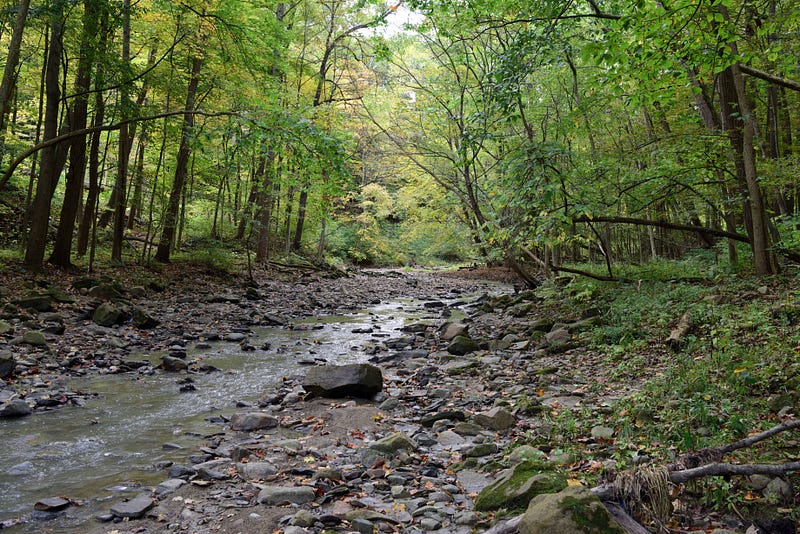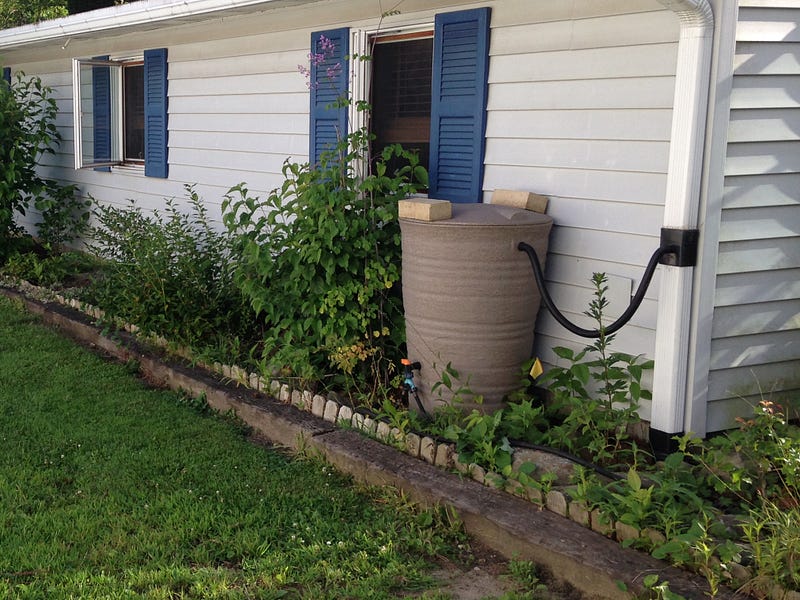
Collecting rainwater in your yard positively impacts local ecosystems and may even save you a bit of money when watering your own garden, but how? Read on to learn more!
The Effect on our Ecosystem
During rainstorms, water falls to our roofs or streets, down pipes and through storm sewers. From there, it rushes to rivers like the Cuyahoga, putting a strain on the waterway and the wildlife that call it home.
According to Rob Curtis, supervisor of ecological resources for Summit Metro Parks, this process also deprives our streams of the opportunity to process rainwater naturally and slowly, which can cause smaller streams to run dry prematurely. When rainstorms occur, water is prevented from getting into the ground and flash flooding occurs. These conditions exacerbate erosion and prevent wildlife like salamanders and fish from inhabiting many of our streams.
By cutting back the amount of water that flows through our storm drains and providing opportunities for water to filter slowly back into our natural areas, we put less strain on our sewer system and protect habitats vital to our native wildlife.

How to Collect Rainwater
Rain barrels connect to downspouts to collect water, diverting it from storm sewers. Repurposing water from rain barrels is easy: grab a watering can, connect a hose or attach an irrigation system to slowly release the water over time. Not only are you supporting our local waterways, but you’re saving a bit of money while keeping your tomato and squash plants watered.
Rain gardens can provide additional support in collecting rainwater to be slowly released into the ground. These gardens are depressions in the land with native plants, from perennial flowers to grasses, that can hold and soak up water runoff before it reaches our storm sewers and waterways.
Keep these tips from Curtis in mind while building your rain barrel or creating your rain garden:
1. Water can attract unwanted mosquitoes. To prevent mosquitoes from reproducing, cover all openings of your rain barrel and adjust conditions of your rain garden to prevent standing water for more than a week.
2. If connecting your rain barrel to an irrigation system for your garden, cover the irrigation hose with leaves or mulch to prevent water from evaporating quickly.
3. Avoid saturating the soil around your house or other structures with foundations, especially in the winter, to prevent basement leaks, frost heaving or other problems.
4. Disconnect rain barrels in the winter.
Looking for more resources to get started? Check out our Programs & Events page to find monthly naturalist-led programming featuring topics like home gardening and plant identification. Visit Summit Soil & Water Conservation District for additional information on rain gardens and more.
For more opportunities to learn about how you can create a healthy habitat in your backyard, sign up for the Wild Back Yards newsletter from Summit Metro Parks here.